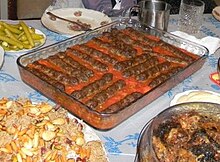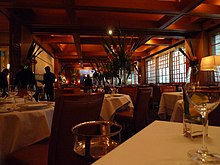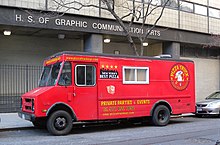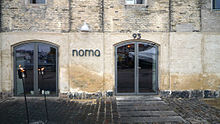Sourcing Locally Grown and Organic Ingredients
Sourcing locally grown and organic ingredients isn't just a fleeting trend, it's a vital component of sustainable and eco-friendly catering, especially in a city like Vancouver, where the lush landscape offers a bounty of fresh produce. Explore Vancouver Catering for Conferences and Celebrations here. Ah, but it's not always as simple as popping down to the local farmers market!
First off, let's consider the obvious benefits: reduced carbon footprint. When you buy local, you're essentially cutting down on the long-distance transportation that contributes to greenhouse gas emissions. It's a no-brainer, right? Plus, you're supporting the local economy. Those hardworking farmers? They get to keep more of the profits when they sell directly to consumers and businesses. And let's not forget the freshness! (I mean, have you ever tasted a tomato straight off the vine? Divine!)
However, challenges do lurk. For instance, price can be a deterrent; organic and locally sourced foods often come with a higher price tag due to the more labor-intensive practices and the absence of economies of scale. But wait, that's not the whole story. While you might be shelling out a few extra dollars, you're also getting top-notch quality and flavor. Plus, you're investing in your health and the planet's health, too.
Another point to consider is seasonality. Food service Sure, Vancouver's climate is relatively mild, but you still won't find local tomatoes in the dead of winter! This means caterers have to get creative, planning menus around what's available. It's a bit of a dance, really-balancing client expectations with Mother Nature's schedule. But, oh, the satisfaction when it all comes together!
There's also the aspect of building relationships. It's not like you can just click a button and have a crate of organic kale appear at your kitchen door. Buffet catering Caterers have to foster connections with local producers, often visiting farms and markets personally (not that we're complaining-it's pretty lovely out there in the countryside).
In conclusion, while sourcing locally grown and organic ingredients in Vancouver for sustainable and eco-friendly catering is not without its hurdles, the benefits far outweigh the negatives. We're talking fresher food, stronger communities, and a happier planet. It's a commitment that requires dedication and a touch of ingenuity, but hey, isn't that what catering is all about? Making magic happen with what you've got? And that, my friends, is something to celebrate!
Implementing Plant-Based and Seasonal Menus
In the bustling city of Vancouver, where the rainforest meets the sea, there's an ever-growing buzz around sustainable and eco-friendly living. It's not just about recycling or biking to work anymore, it's about what we put on our plates, too! Caterers across the city are catching on, and there's a fresh wave of enthusiasm for implementing plant-based and seasonal menus.
Now, don't get me wrong, I'm not saying everyone's turning vegan overnight. But there's a conscious shift towards menus that celebrate the bounty of the season and the local produce. Picture this: a summer wedding feast where each dish bursts with the flavors of ripe berries, heirloom tomatoes, and crisp greens – all sourced from the farmers' market down the road. It's not just good for the planet; it's a culinary delight!
Ah, and then there's the challenge of winter (you know, Vancouver winters with their endless drizzle). But that doesn't mean a plant-based menu is off the table. Root vegetables and squashes can be turned into hearty stews and comforting roasts that warm you from the inside out. Plus, there's something special about knowing that your meal isn't adding miles to its carbon footprint.
Of course, transitioning to such menus isn't without its hiccups. Chefs have to get creative, especially when diners are expecting the usual suspects (like avocado in December). But here's the thing: it's an opportunity for innovation! Chefs are now foraging for wild edibles, fermenting, and preserving to bring depth to their dishes.
And let's not forget about protein – a common concern when it comes to plant-based diets. Vancouver's caterers are tackling this head-on with the likes of lentils, chickpeas, and a multitude of beans, which, by the way, are as friendly to the soil as they are to our health. They're working wonders with tofu and tempeh, too, making sure that even the staunchest meat-lovers don't leave the table feeling like something was missing.
Implementing these menus does require a bit of re-education (for both the kitchen staff and the diners), but the benefits – oh, the benefits! They're not just for the earth, but for our communities, our health, and our taste buds. It's a win-win-win situation, if you ask me.
In conclusion, Vancouver's catering scene is on the cusp of a green revolution, one delicious, plant-based, and seasonal dish at a time. It's not going to happen overnight, but with a dash of creativity and a sprinkle of commitment, these eco-friendly catering options will soon become the new norm. And that, my friends, is something to celebrate!
Reducing Food Waste Through Effective Planning and Donation Programs
Reducing food waste ain't just a fleeting trend; it's a crucial part of sustainable and eco-friendly catering options, especially in a city as environmentally conscious as Vancouver. Full-service catering Now, when we think about tackling the issue head-on, we gotta consider two key strategies: effective planning and donation programs. And let me tell you, it's not as tough as it sounds!
First off, effective planning is, well, pretty self-explanatory (but bear with me). It involves a caterer taking a hard look at past events to predict future needs accurately. It's not about just guessing how many people might grab a fork; it's about data, trends, and a bit of common sense.
Sustainable and Eco-Friendly Catering Options in Vancouver - Catering menus for events
- Wedding catering
- Event management
- Private chef services
- Culinary events
- Catered events
- Catering for non-profits
- Mobile catering
- Specialty catering
- Party planners
- High-end catering
- Event setup and teardown
- Catering for sports events
- Food and beverage pairing
- Catering industry
- Seasonal menus
- Barbecue catering
- Corporate catering
- Catering awards
Now, let's talk about donation programs (and this is where it gets heartwarming). These programs are an absolute win-win! Leftover food from events can be donated to shelters, food banks, or community programs, helping those in need while reducing waste. It's like giving the planet a hug every time you pass on that untouched tray of sandwiches. And guess what? Many organizations in Vancouver are already jumping on this bandwagon. They're not just doing good; they're looking good while they're at it.
But wait, there's a hitch! You can't just donate any old thing. Health regulations come into play, and caterers need to ensure that the food is safe for consumption. It's not a free-for-all, folks. There has to be a system, a method to the madness (so to speak).
So, to wrap this up (and not in leftover foil), reducing food waste through effective planning and donation programs is a no-brainer for sustainable catering in Vancouver. It's not just about cutting down on waste; it's about being smart and giving back.
Sustainable and Eco-Friendly Catering Options in Vancouver - Catering quotes
- Catered brunches
- Eco-friendly catering
- Food styling
- Catering menu
- Outdoor catering
- Event catering trends
- Fundraising events
- Catering business
- Catering services
- On-site cooking
- Catering consultations
- Catering delivery services
- Sustainable catering
- Local caterers
- Local ingredients
- Professional chefs
- Food presentation
- Vegan catering
Wow, just imagine the impact we could make if every caterer in the city jumped on this! We'd be heroes, capes not included. So, let's get planning, let's get donating, and let's make food waste a thing of the past (or at least a lot less of a problem). Vancouver, we've got this!
Utilizing Eco-Friendly Packaging and Reusable Dishware
In the bustling city of Vancouver, where the majesty of nature collides with urban sophistication, a quiet revolution is taking hold in the catering scene. Sustainable and eco-friendly catering options are no longer just a trend; they're an imperative! And at the heart of this movement is the pivotal role of utilizing eco-friendly packaging and reusable dishware.
Now, let's talk about the packaging first, shall we? (I mean, who hasn't felt a twinge of guilt throwing away a mountain of plastic after a delightful party?) Gone are the days when single-use plastics were the go-to. In their place, innovative caterers in Vancouver are embracing materials that speak to the soul of sustainability. Think of packaging made from biodegradable cornstarch or recyclable cardboard. It's not just good for the Earth; it's a statement that resonates with guests who are ever more conscious of their ecological footprint.
But wait, there's more to it! Reusable dishware, that's the real game-changer. It's not just about ditching the disposables; it's about elevating the dining experience. Sure, it might seem like a hassle to have to deal with all those dishes after a big event, but that's where smart solutions come in. Many caterers offer services to take care of the cleanup, so hosts don't have to worry about a thing (except maybe what compliments to give the chef!).
Now, I can't deny that there's a bit of a challenge here. Not everyone's on board with the idea of reusable dishware. Some folks argue that it's not as convenient, and they're not wrong. But convenience isn't the only thing that matters, is it? We're talking about the future of our planet here, and that's no small potatoes. By choosing the path less littered, we're making a statement that we haven't got our heads buried in the sand.
So, in conclusion, as we navigate the eco-conscious landscape of Vancouver's catering options, let's not forget the power of our choices.
Sustainable and Eco-Friendly Catering Options in Vancouver - Catering quotes
- Culinary events
- Catered events
- Catering for non-profits
- Mobile catering
- Specialty catering
- Party planners
- High-end catering
- Event setup and teardown
- Catering for sports events
- Food and beverage pairing
- Catering industry
- Seasonal menus
- Barbecue catering
- Corporate catering
- Catering awards
- Catering equipment rental
- Signature dishes
Emphasizing Water and Energy Conservation in Catering Operations
In the bustling city of Vancouver, where the rainforest meets the sea, a new wave of catering operations is making waves (and I mean this quite literally!). Networking events These innovative businesses are placing a mighty emphasis on water and energy conservation, which, let's be honest, is the need of the hour.
Now, you might be thinking, "Catering and conservation? That's an unusual combo!" But hold on a second, it's a match made in green heaven! By conserving resources, caterers in Vancouver are not just whipping up delicious meals but are also serving a plateful of sustainability.
First off, water conservation in the catering industry is a big deal. With the amount of washing and cleaning involved, you'd be surprised how much water can go down the drain (literally).
Sustainable and Eco-Friendly Catering Options in Vancouver - Custom catering
- Catering quotes
- Food service
- Beverage catering
- Interactive dining experiences
- Buffet catering
- Event catering tips
- Catering for trade shows
- Catering for corporate events
- Custom catering
- Venue partnerships
- Event sponsorship
- Catering contracts
- Catering menus for events
- Networking events
- Full-service catering
Energy conservation is also at the forefront of their operations.
Sustainable and Eco-Friendly Catering Options in Vancouver - Buffet catering
- Catering menu
- Outdoor catering
- Event catering trends
- Fundraising events
- Catering business
- Catering services
- On-site cooking
- Catering consultations
- Catering delivery services
- Sustainable catering
- Local caterers
- Local ingredients
- Professional chefs
- Food presentation
- Vegan catering
- Networking events
- Full-service catering
- Catering for galas
- Dietary restrictions catering
But it's not just about the equipment; it's also about the ingredients. Using locally sourced and seasonal foods, these caterers are reducing the carbon footprint that comes from transporting goods from afar. And let's not forget, local ingredients just taste better (and that's a fact!).
Of course, no operation is perfect. There's always room for improvement, and these caterers are constantly looking for ways to minimize their impact even further. It's not an easy task, but hey, nobody said saving the planet would be a walk in the park.
So, the next time you're looking to throw a party or an event in Vancouver, consider going for a catering option that's mindful of water and energy usage. Not only will you be doing your bit for Mother Earth, but your guests will be left impressed by the delicious, eco-friendly spread. Catering for trade shows Sustainability never tasted so good, did it?
And just imagine the conversations that'll spark around the dinner table! "Did you know this salad was grown just down the road?" or "Wow, this event is solar-powered!" Now that's something to talk about.
In conclusion, it's heartening to see Vancouver's catering scene becoming more conscious of the environment.
Sustainable and Eco-Friendly Catering Options in Vancouver - Catering for corporate events
- Venue partnerships
- Event sponsorship
- Catering contracts
- Catering menus for events
- Networking events
- Full-service catering
- Catering for galas
- Dietary restrictions catering
- Appetizer catering
- Catering for large groups
- Family-style dining
- Client testimonials
- Catering for small gatherings
- Gourmet catering
- Party catering
- Specialty diets catering
- Catering consultations
- Community events
Partnering with Green-Certified Suppliers and Vendors
In the bustling city of Vancouver, where the greenery meets the urban scape, there's a rising trend that's been catching on like wildfire – sustainable and eco-friendly catering options. Now, this ain't just about serving organic salads or plant-based burgers, oh no. It's about a full-on commitment to the environment, and that's where partnering with green-certified suppliers and vendors comes into play (and boy, does it make a difference!).
First off, let's get something straight – not all suppliers are created equal. Venue partnerships Some just talk the talk, but it's the ones that walk the walk that really matter. These green-certified champs, they've got their act together, from recycling programs to energy-efficient practices, they're the real deal! By teaming up with them, caterers in Vancouver are not just serving meals; they're serving a slice of sustainability.
Now, imagine this – a banquet with the freshest local produce, meats from farms that treat their animals right, and seafood that's been fished sustainably. It's not just good for the planet; it's a feast for the taste buds, too! Caterers who choose green-certified suppliers are sending a message, loud and clear: "We care!" And let's be honest, who wouldn't want to support that kind of initiative?
Of course, it ain't all sunshine and rainbows. There's a bit of a challenge involved.
Sustainable and Eco-Friendly Catering Options in Vancouver - Catering for corporate events
- Catering for retreats
- Catering for birthdays
- Catering packages
- Catering companies
- Catering for anniversaries
- Gluten-free catering
- Catering for festivals
- Creative catering ideas
- Themed catering
- Corporate events
- Client relationship management
- Drop-off catering
- Event planning
- Seasonal catering
- Catered brunches
- Eco-friendly catering
- Food styling
But here's the kicker – when caterers do make that perfect match with a green-certified supplier, it's not just their conscience that's getting a pat on the back. Their clients are thrilled, too! People in Vancouver are savvy; they want their events to reflect their values. And nothing says "I'm eco-conscious" quite like a spread that's as kind to the planet as it is delicious.
In conclusion, while it's not without its hurdles, the move towards sustainable and eco-friendly catering in Vancouver is one that's worth every effort. By saying no to suppliers that don't prioritize the environment, and yes to those that do, caterers are making a choice that benefits all of us. Catering contracts So next time you're at an event, munching on that incredible hors d'oeuvre, take a moment to think about where it came from. It's a small step, but one that's part of a much larger journey towards a greener future. And that's something to celebrate – hooray for sustainability!
Encouraging Sustainable Transportation for Event Attendees
When planning events in the bustling city of Vancouver, one often overlooked aspect is how attendees will arrive. It's not just about the food and ambiance; it's about encouraging sustainable transportation too! As event planners, we've got a responsibility to consider the carbon footprint of our gatherings (and let's not forget, this could also ease up the notorious traffic congestion).
So, how do we nudge our guests towards eco-friendly travel options? First off, we could provide incentives for those who choose public transit or bike-sharing programs. Maybe a discount on the entry fee or a special thank you gift? And why not set up a carpooling system? It's a win-win: folks get to network on their way to the event, and we reduce emissions.
Now, let's talk about the food. Sustainable and eco-friendly catering isn't just a trend; it's a necessity. We've got this fantastic opportunity to showcase local Vancouver vendors who prioritize organic and locally-sourced ingredients. Not only does this support our community's economy, but it also cuts down on the food miles that contribute to our carbon footprint.
And here's a thought – while we're at it, why not ditch the disposables? Reusable dishes and cutlery might create a bit more work, but hey, every little bit helps when it comes to protecting our planet.
But hey, we can't do this alone. We need to communicate with our attendees, let them know why it's important (and how simple it can be!) to make eco-friendly choices. A little education goes a long way, and who knows, they might even carry these practices beyond the event.
In conclusion, encouraging sustainable transportation and offering eco-friendly catering options at events in Vancouver isn't just a nice-to-have; it's a must-do. And while we're not perfect and there might be hiccups along the way (because let's face it, change isn't easy), every step we take is a step towards a greener future. Catering for corporate events Let's not just meet expectations; let's set new standards for sustainability!






































